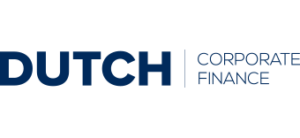Unlocking the Value: Decoding the Income-Based Approach to Intellectual Property Valuation
Unlocking the Value: Decoding the Income-Based Approach to Intellectual Property Valuation
Determining the economic value of intellectual property (IP) is no easy feat. Among various valuation methods, the income-based approach takes center stage. By focusing on the potential income or financial benefits derived from IP assets, this approach provides insights into their true value. In this blog, we explore the commonly used techniques within the income-based approach and shed light on the ‘art’ of IP valuation.
The Cost-Based Approach: Unveiling the Development Expenses
The cost-based approach determines the value of IP by evaluating the cost required to recreate or develop a similar asset from scratch. Research and development expenses, production costs, marketing investments, and other relevant expenditures are taken into account. However, while this method provides a foundation, it may fall short in capturing the value of unique or highly innovative IP assets as it does not take into account its future earning potential.
The Market-Based Approach: Seeking Comparable Benchmarks
The market-based approach relies on comparing the IP asset to similar assets that have been sold in the market. By analysing comparable licensing or sales agreements, transaction prices, or royalty rates serve as benchmarks. Nevertheless, finding truly comparable IP assets can prove challenging, particularly as data is scarce in the non-listed market, or when dealing with highly distinctive intellectual property.
The Income or Cash Flow Approach: Projecting Future Prosperity
The income or cash flow approach estimates the economic value of IP by projecting the income or cash flows it is expected to generate over its useful life. By forecasting revenue or profits directly attributable to the IP, market demand, pricing, competition, and potential risks are considered. This widely-used technique involves estimating future cash flows generated by the IP asset and discounting them back to their present value using an appropriate discount rate. By considering the time value of money and associated risks, DCF analysis provides a comprehensive valuation framework.
Conclusion
Unraveling the economic value of intellectual property is a journey that demands an understanding of the income-based approach in combination with specific IP expertise. The cost-based method reveals the development expenses, while the market-based approach seeks comparable benchmarks. The income or cash flow approach projects future prosperity, and the discounted cash flow (DCF) analysis stands as a cornerstone technique. Nevertheless, true mastery lies in tailoring the approach to the unique characteristics of each IP asset. By combining methods and leveraging professional expertise, we can unlock the true value of intellectual property, empowering innovation and driving economic growth in the ever-evolving landscape of ideas.
About the author:
Polle-Tobias Taminiau specialises in valuing, buying & selling and financing intellectual property. He is associated with DUTCH Corporate Finance in the Netherlands and works internationally. www.dutch-cf.nl Polle-Tobias is a Register Valuator affiliated with the Dutch Institute of Registered Valuators. His clients mostly are IP-rich companies, ranging from start- and scale-ups to multinationals. Together with Dr Robert Phaal, affiliated with the Institute for Manufacturing at the University of Cambridge, Polle-Tobias wrote the paper "Financing early stage innovation ventures – a value-oriented roadmapping framework" https:// doi:10.17863/CAM.46897

